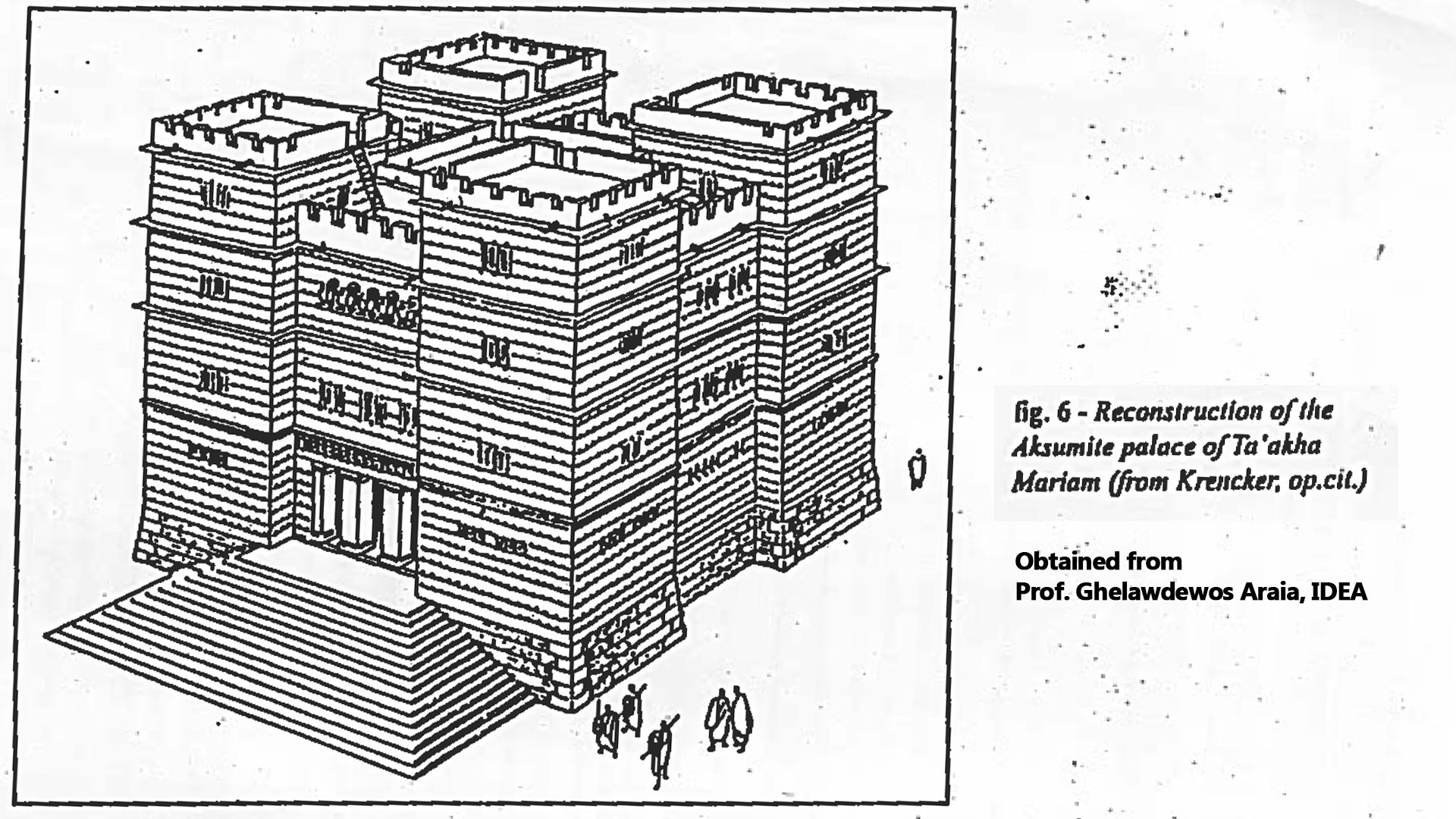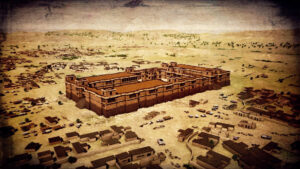The Queen of Sheba’s Palace, locally known as Dungur, is ruins of an important royal palace of the famous Queen of Sheba from which, according to oral history and legends, ruled much of present day Ethiopia, Eritrea, eastern Sudan, Yemen, and the coastal states of East Africa as far as Madagascar.
It was a monumental stone edifice, typical of the palatial architecture of the Axumite Empire, comparable to the 3rd century Enda Mikael palace for example. Dungur was the smaller of the four primary palaces discovered in Axum. Unfortunately, the largest, the 80 x 120 m Ta’akha Maryam structure, was obliterated when the Italian occupying forces decided that they didn’t want to re-route a road around it, and built it right through the centre of the remains. The Enda Mikael and Enda Semon structures are extensively built-over by locals.

The Aksumite Empire, centred on the Ethiopian highlands and Eritrea, was one of the great powers of the ancient world, first gaining prominence around the 1st century A.D. It grew wealthy from trade, being tapped into the Indian Ocean trade networks via its Red Sea ports such as Adulis. By the 4th century, it had become powerful enough to sack Meroë, ancient capital of the Kushites in Sudan, and at its height, went on to dominate much of Yemen across the Red Sea as well. Under King Ezana, Aksum became one of the earliest kingdoms in the world to adopt Christianity as its state religion. The country was also host to some of the worlds earliest muslims escaping persecution in Mecca. An event known as the First Hijra.
The Gudit Stelae Field is apparently lower-status graves than the other two stelae fields. It maintains a lower-status even in the modern Axum – as it can be seen today, the site is still being farmed. Only limited archaeological work has been done, with trenches dug in 1973-4 (Chittick) and 1995-6 (Phillipson)

